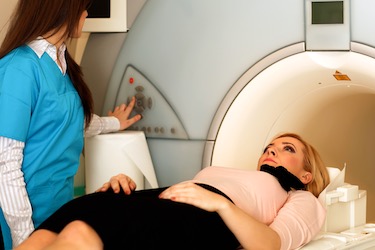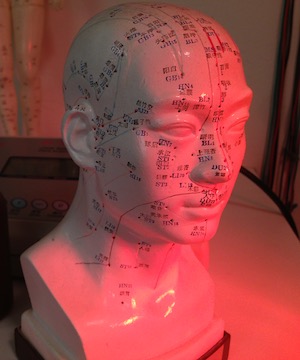Magnetic resonance imaging (MRI) reveals that acupuncture prevents and relieves migraines by restoring normal brain functions. MRI results demonstrate that acupuncture decreases the frequency and duration of migraine attacks by increasing functional connectivity in the brain’s frontal and temporal lobes.  The researchers add that the MRI data reveals the “neural mechanisms of acupuncture treatment for migraine.”
The researchers add that the MRI data reveals the “neural mechanisms of acupuncture treatment for migraine.”
Brain regions of the frontal and temporal lobes have “decreased functional connectivity” in migraine sufferers. The MRI results demonstrate that acupuncture restores functional connectivity in the affected regions. After a four week course of acupuncture treatment, migraine sufferers “showed significantly increased functional connectivity in the bilateral superior frontal gyrus, medial frontal gyrus, precuneus, inferior parietal lobule, posterior cingulate cortex, cingulate gyrus, superior temporal gyrus, middle temporal gyrus, and supramarginal gyrus as compared with before acupuncture treatment.” In addition, the researchers conclude that acupuncture decreases the frequency and duration of migraine attacks after a four week course of acupuncture therapy.
The researchers note that a large body of clinical research concludes that “acupuncture is able to alleviate headache degree and/or improve the quality of life and it is safe and at least as effective, if not more effective than prophylactic drug treatment.” The purpose of their investigation was to measure how acupuncture accomplishes pain relief. The researchers note, “The current results indicated that the neural mechanisms of acupuncture for migraine prophylaxis might be interpreted as that acupuncture treatment could increase the decreased resting-state functional connectivity in certain brain regions within the frontal and temporal lobe of MWoA (migraine without aura) patients.”
They add that studies show that the “frontoparietal network plays an important role in endogenous pain modulation.” As a result, the researchers posit “that acupuncture treatment could enhance the pain related modulatory effects of the frontoparietal network by increasing its functional connectivity in migraine patients.” They also note that the results indicate that acupuncture relieves pain by enhancing the “functional connectivity of the default mode network and other brain networks.”
Worldwide, there are millions of migraine sufferers.  The researchers note that “the clinical therapeutic effect of acupuncture for migraine prophylaxis has been widely recognized” but the underlying effective mechanisms had not been fully elucidated. Using a 3.0 T Siemens MRI scanner with a total of 32 axial slices per patient, the researchers discovered acupuncture’s ability to relieve migraines by enhancing functional brain connectivity.
The researchers note that “the clinical therapeutic effect of acupuncture for migraine prophylaxis has been widely recognized” but the underlying effective mechanisms had not been fully elucidated. Using a 3.0 T Siemens MRI scanner with a total of 32 axial slices per patient, the researchers discovered acupuncture’s ability to relieve migraines by enhancing functional brain connectivity.
All migraine patients received manual acupuncture treatments over a four week period. The acupuncture points used in the study were:
- Sizhukong (SJ23)
- Shuaigu (GB8)
- Fengchi (GB20)
- Taiyang (EX-HN5)
- Hegu (LI4)
- Taichong (LR3)
- Waiguan (SJ5)
- Yanglingquan (GB34)
- Zulinqi (GB41)
Disposable stainless steel acupuncture needles of 0.25 x 40 mm were used. Manual acupuncture techniques were used at each acupoint to elicit a deqi sensation. Acupuncture needles were subsequently retained for 30 minutes. Acupuncture treatments were given five times per week over the four week treatment period. No adverse events occurred and all patients involved in the study completed the treatment course.
References:
Zhang, Yong, Kuang-shi Li, Hong-wei Liu, Cai-hong Fu, Sheng Chen, Zhong-jian Tan, and Yi Ren. "Acupuncture treatment modulates the resting-state functional connectivity of brain regions in migraine patients without aura." Chinese Journal of Integrative Medicine (2015): 1-9.
Lo MY, Lin JG, Wei OM, Sun WZ. Cerebral hemodynamic responses to acupuncture in migraine patients: a systematic review. J Tradit Complement Med 2013;3:213-220.
Zhao L, Qin W, Liu JX, Fang L, Dong MH, Zhang FW, et al. Two sets of acupoint combination of similar functions engage shared neural representation: a functional magnetic resonance imaging study. Chin J Integr Med 2014;20:184-193.


